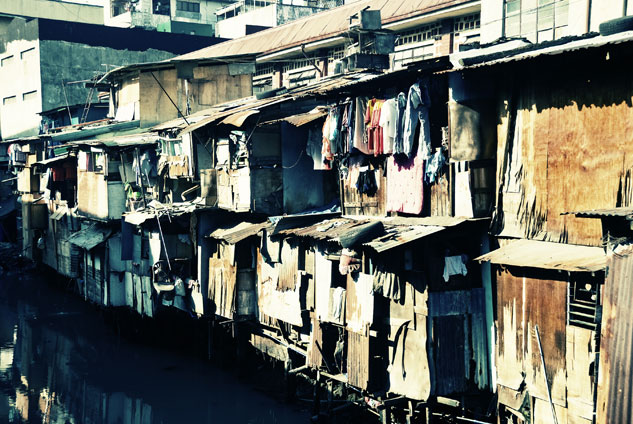Lesson 4.5
| Site: | MoodleHUB.ca 🍁 |
| Course: | PAVE Social 10-1 |
| Book: | Lesson 4.5 |
| Printed by: | Guest user |
| Date: | Sunday, 30 November 2025, 8:56 AM |
Description
Section 3
Section 3 Introduction
Section 3 Introduction
How does economic globalization create prosperity?
Inquiry into the Issue
Who enjoys prosperity in a globalizing world?
The annual “Legatum Prosperity Index” researches and ranks the prosperity and material wealth and life satisfaction of the people living in various countries.
Internet
This is a required activity to support the inquiry but will not be graded.
Go to the latest annual report and explore the following features:
- Browse the World – Scroll over the continents and examine the prosperity and wealth rankings of individual countries.
- Prosperiscope – Select five countries to compare their relative strengths and weaknesses in material wealth and life satisfaction.
- Happiness – More than just money? – Select Canada and compare how Canadians rank in comparison to other countries in terms of wealth and satisfaction.
Assignment
Please complete the Inquiry: Who Enjoys Prosperity? Assignment at this point.
Lesson 1
Lesson 1—Opportunities and Challenges
What are the political and economic challenges and opportunities of contemporary globalization?
Get Focused
“We need business to give practical meaning and reach to the values and principles that connect cultures and people everywhere.”
—Ban Ki-Moon in an address to the Global Compact Board, 4 April 2007. New York.
corporate citizenship: refers to the extent that the actions and decisions of a multinational corporation are responsible and consider the impacts on people and the environment
A trend of the last few decades has been to align corporations with humanitarian causes to present an image of good corporate citizenship.
Internet
This is a required activity to support your Get Focused but will not be graded.
Notable Communication on Progress is the recognition of the commitments and actions of businesses and global giants that have committed to the principles of the Global Compact. There were 177 businesses that reported progress in 2007. On the Internet you can view the list of Global Compact participants who are recognized as making notable progress at the United Nations Global Compact website under the tab "Communicating Progress."
Peruse the list for businesses you recognize and examine what progress they have made in aligning with the ten principles.
Inactive or non-communicating participants are businesses that joined the Global Compact but have not communicated progress in aligning with the ten principles.
Explore 1
Explore 1
What economic and political barriers exist?
Canadians generally describe their ways of life as prosperous. This prosperity is strongly tied to the economic prosperity enjoyed because of Canada’s ability to participate in the international economy. Are there barriers placed on less-developed countries that would benefit from the opportunities of economic globalization?

Over the decades, media has captured scenes of protests against globalization, international trade organizations, and meetings of the most powerful economies of the world. Organizers of the World Trade Organization and the G8 meetings defend these organizations and conferences as key to addressing global issues, and they often focus on gathering international support for least developed countries. Why are there protests?
World Trade Organization: an international organization of 152 members that works to improve trade relations between its members and to remove tariffs and trade barriers; formerly the General Agreement on Tariffs and Trade
G8 (Group of 8): a group of eight highly industrialized and democratic nations that agree to regularly meet and discuss economic and foreign policies
Internet
This is a required activity to support the Explore but will not be graded.
Go to the Internet to examine Protest G8 – 2007, a viral video independently produced as a call for protest at the June 2007 meeting of the G8. It presents contrasting images of quality of life and industrialization.
A key criticism by protesters is the political barrier created by the monopoly of decision making by a handful of economically powerful countries and multinational corporations. In the view of many protesters, international trade agreements and organizations are exclusive. They bar small businesses and least developing countries from participating in meaningful ways to benefit from the opportunities of economic globalization.


There are economic barriers that a country may face such as a lack of financial capacity to create industries, a skilled work force, and the infrastructure for production.
There may be technological barriers such as access to technology and the Digital Divide.
Digital Divide: refers to the gap between citizens of countries in the access to digital and information technologies
This gap may be a factor in the country’s ability to participate in the global economy.
Activity: LDC
The UN–OHRLLS (United Nations Office of the High Representative for the Least Developed Countries, Landlocked Developing Countries and Small Island Developing States) has created a list of LDCs (Least Developed Countries) and criteria to identify which countries fall into this category.
- a low-income criterion, based on a three-year average estimate of the gross national income (GNI) per capita (under $750 for inclusion, above $900 for graduation);
- a human resource weakness criterion, involving a composite Human Assets Index (HAI) based on indicators of: (a) nutrition; (b) health; (c) education; and (d) adult literacy; and
- an economic vulnerability criterion, involving a composite Economic Vulnerability Index (EVI) based on indicators of: (a) the instability of agricultural production; (b) the instability of exports of goods and services; (c) the economic importance of non-traditional activities (share of manufacturing and modern services in GDP); (d) merchandise export concentration; and (e) the handicap of economic smallness (as measured through the population in logarithm); and the percentage of population displaced by natural disasters.
Measuring Progress in Least Developed Countries © United Nations-OHRLLS & World Bank 2006
There are fifty countries on the LDC list. Select one least developed country. In addition to other research tools, you may use the document produced by the UN–OHRLLS and the World Bank online called “Measuring Progress in the LDCs: A Statistical Profile.” It provides statistical information for each of the countries.
average gross national income per capita: the amount of income earned on a yearly basis calculated on total value of currently produced goods and services of a country divided by the population of the country
- Research the average gross national income per capita for the last three years.
- Identify key issues in nutrition, health, education, and adult literacy.
- Describe the ability of this country to manage agriculture, exports of goods and services, and manufacturing.
- Research what membership this country holds in the United Nations and international organizations and agreements such as the WTO.
- Research the ability of this country to participate in the use of technology.
- Based on the criteria, identify the economic, political, and technological barriers that challenge the country’s status as an LDC and its ability to participate in the world economy.
- Compile your research into a one-page briefing that identifies the country and presents the researched information and your conclusions (you can post it in the Module 4 Discussion Forum)
Explore 2
Explore 2
What opportunities can economic globalization provide?

In this Explore you will examine the role of trade agreements and international trade. Do these forces of economic globalization benefit the prosperity of people?
Read
-
Read pages 251 to 253 in Perspectives on Globalization – Do trading blocs contribute to sustainable prosperity for all people?
What trading blocs exist?
trading blocs: countries that have an agreement to trade freely between member countries at the exclusion of non-member countries
- Read pages 254 and 255 in Perspectives on Globalization – EU Expansion: Prosperity for All?
What effects do trade blocs such as the European Union have on people?
- Read pages 256 to 260 in Perspectives on Globalization. How can international trade be regulated to ensure that its benefits can be equally shared by all people?
IMF (International Monetary Fund): a global network of institutions created in 1945 to promote international trade and the regulation of currency among Western countries
This organization has grown from a membership of 45 countries to 185. The original role of the IMF was to stabilize the global economy after the Second World War. It is now involved in providing emergency short-term loans to less-developed countries and promotes reforms for economic growth and stability in countries experiencing economic and political issues.
What are the roles of the World Bank and the IMF since the end of the Second World War? What efforts are made to ensure that benefits of economic globalization are equally shared? Are they effective or ineffective?
- Read pages 261 to 266 in Perspectives on Globalization. What opportunities and challenges has economic globalization brought to Canada?
What effects does trade liberalization have on the people of Canada?
- Read pages 218 to 221 in Perspectives on Globalization.
What are the perspectives on freer trade?
Lesson 2
Lesson 2—Prosperity
Is prosperity sustainable in the twenty-first century?
Get Focused
Profit or sustainability? Are corporations serious about efforts to create sustainability? Opponents of economic globalization and the expansion of global giants are skeptical of the claims of many corporations. In marketing media and on their corporate websites, many corporations now state that sustainability and care for people and the environment are part of their business plan. The skeptics accuse them of greenwashing.
greenwashing: refers to the strategy used by some businesses to persuade consumers that they align their business actions to efforts to sustain the environment
This is often a marketing strategy.
Activity
Go to the Internet and research the marketing strategies of these companies. Stop Greenwashing has a collection of ads that citizens have uploaded as evidence that profit drives a new green attitude in some of the multinational corporations.
- PepsiCo, Starbucks, and Matt Damon – H20 Africa clean water initiative and Ethos bottled water
- Coca-Cola and REPET wear and the Mount Franklin water campaign to reforest Australia
- GE and Ecomagination
- Hummer by General Motors
- President’s Choice and Canada’s Greenest Shopping Bag
Explore 1
Explore 1
What examples demonstrate that economic globalization does or does not lead to universal prosperity?
Examine whether economic globalization improves universal prosperity.
Activity
This is a required activity to support the inquiry but will not be graded.
The World Bank has created the Online Atlas of The Millennium Development Goals. You can read about each of the eight Millenium Development Goals and see how much of the world is meeting the targets by viewing the map.
Click on the interactive map. Resize the map to view how much of the world continues to experience issues with poverty, hunger, education, gender equality, and child mortality.
Millennium Development Goals (MDG): a list of eight goals developed in the year 2000 by the United Nations in collaboration with world leaders to set goals for the reduction and elimination of poverty, hunger, disease, illiteracy, environmental degradation, and discrimination against women
The target date for achieving measurable results is 2015.
hunger: an issue that affects individuals and population when access to food is limited over a considerable period of time
gender equality: the degree to which opportunities are accessible by both men and women in a country
child mortality: refers to the death of a child within the first five years of life
The child mortality rate is used to classify the ability of a country to meet the basic needs of its citizens. A high child mortality rate is related to a low standard of living and issues related to access to basic services such as adequate food, health care, and education.
Read
Click HERE for your readings for this section.
Multimedia
View the World Bank slide show about rising food prices. Click on "Food Prices," and then click on the plus (+) sign.
Explore 2
Explore 2
What examples demonstrate that prosperity is accessible only to developed countries already enjoying the benefits of economic globalization?
Those who take an anti-globalization position often point out the lack of equity perpetuated by economic globalization. Equity is very much related to quality of life and prosperity. One understanding of equity is equal access to opportunities and the absence of barriers to the basic needs of life. Complete this Explore task to find out in which ways economic globalization creates inequity and limits prosperity to developed countries.
equity: equal access to opportunities and the absence of barriers to the basic needs of life
inequity: a condition of unfairness or injustice
anti-globalization: the position on the issues of globalization held by individuals and groups opposed to the expansion of global trade, global trade agreements, and multinational corporations because of the negative consequences on the quality of life and environment of people around the world, especially in less-developed countries
pro-globalization: support of the free flow of influences and forces throughout the world
international trade: the exchange of raw resources and manufactured goods and services between countries around the world
Read
Click HERE to for your reading.
The World Bank Data classifies economies by gross national income per capita. Click on Country Classification to view countries classified in these groups: low income, lower middle income, upper middle income, and high income groups.
Examine the graph titled “Developing economies increased their share of world output.”
Assignment
Please complete your Who Benefits? assignment at this point.
Section 3 Challenge
Transnational Corporations and the Interests of the County
How compatible are the interests of transnational corporations with the interest of the country?
You have now completed the lessons for Module 4 Section 3. Complete the section challenge activity to demonstrate the new understandings you have developed about the opportunities and challenges of contemporary economic globalization.
In this section challenge you will evaluate the compatibility of transnational corporations with the interests of the country to meet the needs of its citizens.
Step 1: My Understandings of Transnational Corporations
Think about the concept of transnational corporations. What relationships exist between transnational corporations and the countries in which they operate? Why would countries encourage their operations within their borders? What threats could these corporations pose to the countries in which they operate?
Step 2: My list of Opportunities and Challenges Posed by Transnational Corporations
Brainstorm the kinds of benefits and potential challenges presented by transnational corporations.
Step 3: Developing a Set of Basic Priorities
Create a set of basic priorities that countries should apply to meeting the needs of its citizens. Use the following criteria to establish the priorities:
- prosperity of the people
- equality of treatment and opportunity
- territorial security
- cultural and social vitality
- environmental health
- influence on the world stage
What specific priorities will meet these criteria?
Some countries integrate their priorities into their constitution.
For example, the Constitution of Poland, adopted in 1997, offers the following principles:
The Republic of Poland shall safeguard the independence of and integrity of its territory and ensure the freedoms and rights of persons and citizens, the security of the citizens, safeguard the national heritage and shall ensure the protection of the natural environment pursuant to the principles of sustainable development.
Step 4: Researching a Transnational Corporation
Research the actions and policies of a transnational corporation. You may select a transnational corporation suggested by your teacher or one from the following suggestions:
- Alcan
- Bombardier
- Chevron
- Continental
- Disney
- Exxon
- Goldman Sachs
- Honda
- HP (Fortune Magazine)
- McDonald’s
- Microsoft
- Nike
- Pepsi
- PG
- Saab
- SC Johnson
- Starbucks
- Suncor
- Swiss Re
- Tesco
- Tim Horton’s
- Wal-Mart
Multinational Monitor lists the best and worst multinationals. A search of “multinational corporation” in Wikipedia, the Free Encyclopedia provides links to informative websites describing the history and operations of over forty transnational corporations. (See References.)
Assignment
Please complete the Challenge: Transnational Corporations and the Interests of the Country assignment at this point.
Section Glossary
Section 3 Glossary
anti-globalization: the position on the issues of globalization held by individuals and groups opposed to the expansion of global trade, global trade agreements, and multinational corporations because of the negative consequences on the quality of life and environment of people around the world, especially in less-developed countries
average gross national income per capita: the amount of income earned on a yearly basis calculated on total value of currently produced goods and services of a country divided by the population of the country
barrier: a condition that blocks or impedes an opportunity
child mortality: refers to the death of a child within the first five years of life
The child mortality rate is used to classify the ability of a country to meet the basic needs of its citizens. A high child mortality rate is related to a low standard of living and issues related to access to basic services such as adequate food, health care, and education.
corporate citizenship: refers to the extent that the actions and decisions of a multinational corporation are responsible and consider the impacts on people and the environment
A trend of the last few decades has been to align corporations with humanitarian causes to present an image of good corporate citizenship.
Digital Divide: refers to the gap between citizens of countries in the access to digital and information technologies
This gap may be a factor in the country’s ability to participate in the global economy.
equity: equal access to opportunities and the absence of barriers to the basic needs of life
G8 (Group of 8): a group of eight highly industrialized and democratic nations that agree to regularly meet and discuss economic and foreign policies
gender equality: the degree to which opportunities are accessible by both men and women in a country
greenwashing: refers to the strategy used by some businesses to persuade consumers that they align their business actions to efforts to sustain the environment
This is often a marketing strategy.
hunger: an issue that affects individuals and population when access to food is limited over a considerable period of time
IMF (International Monetary Fund): a global network of institutions created in 1945 to promote international trade and the regulation of currency among Western countries
This organization has grown from a membership of 45 countries to 185. The original role of the IMF was to stabilize the global economy after the Second World War. It is now involved in providing emergency short-term loans to less-developed countries and promotes reforms for economic growth and stability in countries experiencing economic and political issues.
inequity: a condition of unfairness or injustice
international trade: the exchange of raw resources and manufactured goods and services between countries around the world
Millennium Development Goals (MDG): a list of eight goals developed in the year 2000 by the United Nations in collaboration with world leaders to set goals for the reduction and elimination of poverty, hunger, disease, illiteracy, environmental degradation, and discrimination against women
The target date for achieving measurable results is 2015.
pro-globalization: support of the free flow of influences and forces throughout the world
trading blocs: countries that have an agreement to trade freely between member countries at the exclusion of non-member countries
World Trade Organization (WTO): an international organization of 152 members that works to improve trade relations between its members and to remove tariffs and trade barriers; formerly the General Agreement on Tariffs and Trade
Module 4 Summary
Module 4 Summary
You have now completed the explorations necessary to gather understandings to respond to the related issue: To what extent does globalization contribute to sustainable prosperity for all people?
The understandings you gathered in this module are based on how your quality of life, and the quality of life of others presented in Explore, have been influenced by contemporary economic globalization. You had opportunities to analyze your own understandings of prosperity, identify key events and ideas that contribute to the expansion of economic globalization, and examine multiple perspectives on sustainability and prosperity in a globalizing world. The Explore featured examples of how economic globalization created opportunities and/or barriers to universal prosperity. You also examined examples of how multinational corporations are dealing with issues of sustainability.
In Module 5 you will look at what impacts are created by actions and policies associated with globalization.
Assignment
Please complete Essay # 2 Draft: To what extent should we embrace contemporary economic globalization?
When you are done your draft, please submit your good copy with your corrections.

